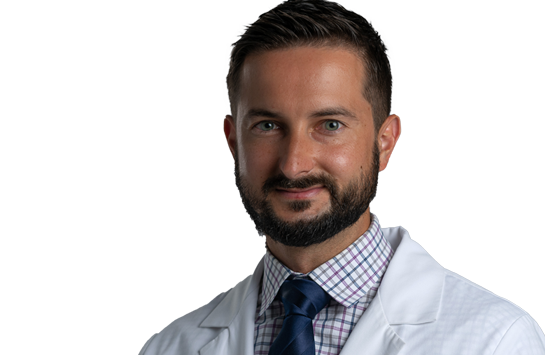Partnership Spotlight – Rush University

As one of the oldest pharmacy schools in the United States, the UIC College of Pharmacy has a history of establishing successful relationships with healthcare institutions throughout the nation and around the world in the interest of advancing not only pharmacy education but the profession itself.
Thriving in the heart of a big city, UIC has the advantage of proximity to top-notch institutions in its own backyard. One such connection that is essential to both institutions and, arguably, to the health and wellbeing of the metropolitan Chicago patient population, is with Rush University Medical Center.
Situated just blocks away from UIC’s own medical center and health-sciences campus, the relationship between the two institutions has existed for some time. However, the intimate connection between UIC Pharmacy and Rush Pharmacy has just come into its own in the past two decades.
Rush’s Nora Flint, former associate director of pharmacy, and Erin Shaugnessy, PharmD ’03, director of pharmacy, have played crucial roles in the link between the two institutions. Together, they have overseen the influx of UIC students who participate in both the IPPE and APPE clerkships that Rush offers, as well as the PharmD graduates who go on to pursue PGY1 and PGY2 residencies at Rush. “Our intern program recruits from schools all over the city, and we do get a good number from UIC,” says Flint. “From a geography standpoint, Rush makes sense [for UIC students].”
Besides proximity, Rush offers pharmacy students from UIC a complementary learning opportunity through its contrasting practice model.
“UIC is very academics-focused because the school is embedded within the hospital,” says Flint. “Rush is a freestanding hospital with integrated clinical and operations services, so that just provides a different type of practice for students to be exposed to.”
Part 2 Heading link

“[UIC students] get valuable experience working in the medical reconciliation and in the main pharmacy seeing how pharmacy operations work,” adds Shaugnessy. “They get to work on clinical projects with staff and often are given additional opportunities, so it’s not just a technician job.
“They also get an up-close look at our residency program to see if that’s something they’d want to be a part of.”
As it turns out, that’s an opportunity that a number of UIC College of Pharmacy graduates have taken Rush up on.
While in school at UIC, Gigi Rechner, PharmD ’11, worked as a pharmacy technician at Rush, where she witnessed an expansion of both pharmacy services and the residency program.
“I wanted to be part of that opportunity,” says Rechner.
Subsequently, during her PGY1 in adult medicine, Rush established their 24-hour, on-call program, which she took advantage of for its particular challenges.
“I’m a strong believer that our on-call program is most valuable,” says Melissa Kocek, PharmD ’13. Kopek did her PGY1 at Rush and, like Rechner, ended up accepting a permanent position there after residency.
“It was in the late evening hours, responding to codes and restricted antimicrobial that I truly learned to make clinical decisions independently.”
Rechner also appreciated Rush’s focus on “the operational aspect of pharmacy. Having that experience with the entire process, from order to production to getting it to the patient—it’s made me a stronger clinical pharmacist.”
In return for the quality training at Rush, UIC offers its residents a teaching certificate program, conveniently located in its nearby Wood Street facility.
“These days, here is a huge drive for residency programs to provide a teaching certificate,” says Flint. “UIC’s is a well-established program, and it provides a strong education on how to teach and precept students.”
Gary Peksa, PharmD ’10, has gained a wealth of experience mentoring students in the decade he’s been at Rush since completing his residency there in 2011. Starting off as an emergency medicine pharmacist, Peksa subsequently moved into roles as the PGY2 emergency medicine residency director and then manager of clinical pharmacy services. This past June, he became the manager of education and transitions of care.
“One of the things most valuable to me, when I chose to apply to Rush [for residency], was that they had a lot of recognition among pharmacy organizations with regard to preceptors and leadership,” Peksa says. “Nora was very involved in ASHP, and a lot of preceptors were helping to write guidelines in the care of patients. In terms of preceptorship and learning opportunities, Rush had many different types of rotations to offer.”
Part 3 Heading link

In his current position at Rush, Peksa’s career comes full circle as he follows Flint’s footsteps in overseeing the residency program, which, he explains, is a role that can often go beyond academics.
“I do enjoy precepting and mentorship, but I love working throughout the year on research projects with residents, teaching them the skills that I’ve refined over the years, and passing on that knowledge,” says Peksa who was voted Rush Preceptor of the Year for 2015–16 by residents.
“As preceptors, we are there to be their mentors through what can be a very stressful year.”
Flint, now semiretired, appreciates the synergy Rush and UIC have shared over the years.
“UIC offers a high caliber of student,” she says, also citing the continuing education opportunities provided to Rush, resources shared with preceptors, and the collaborative nature of UIC faculty.
“Rush is a top-ranked medical center practicing state-of-the-art medicine and pharmacy,” says Dean Glen Schumock. “They have been an essential partner to the UIC College of Pharmacy, and we value the quality experiential education opportunities they provide for our students at their institution.”